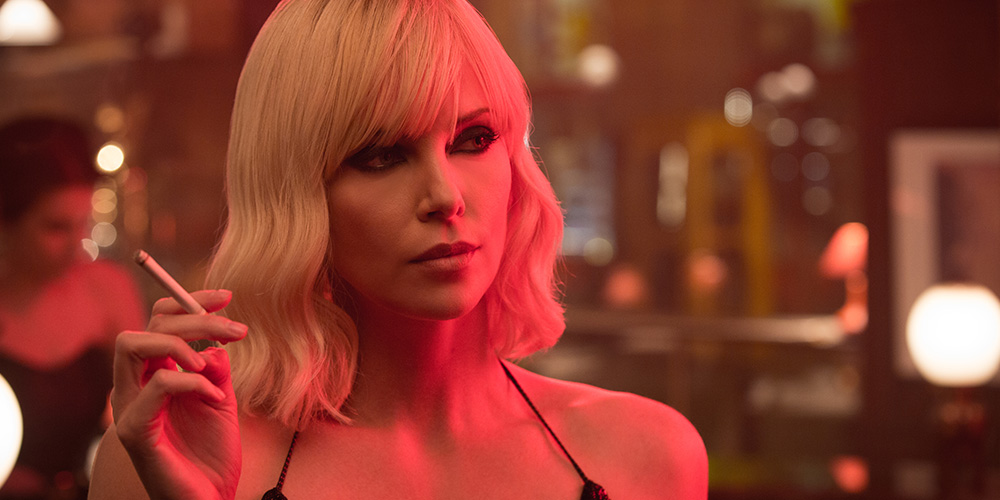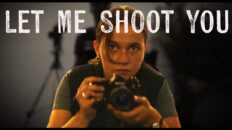“[W]hen I was kid buying every single Marvel comic, I didn’t like superheroes. I just liked the idea of comics, these colorful drawings. I would always read the parts where they’re in their secret identity, where they’re just normal, in their job, and then kind of skip through all the superhero parts. I had friends who would read them and talk about how awesome all the fighting was, and I would think, ‘Why don’t you just watch a movie?’” – Daniel Clowes (Ghost World, Eightball)
***
Atomic Blonde, adapted from the comic The Coldest City by writer Antony Johnston and artist Sam Hart, doesn’t have any superheroes, but it does have spies hiding behind secret identities and awesome fighting. Lots and lots of fighting. The film, starring Charlize Theron and directed by David Leitch, a long-time Hollywood stuntman and uncredited co-director of 2014’s John Wick, is indisputably a top-notch action vehicle centered around a vivid and charismatic female protagonist.
There has been some discussion of this film being a high point for feminism or women’s voices in film; in this case an action film. But despite Charlize Theron’s prominent role as headliner and producer, the film was still directed by, written by, and based off a comic by men. That is not to say, I think that a film with the participation of men in such roles cannot be a positive vehicle for women’s perspective and voices. I am thinking of Theron’s recent turn in Mad Max: Fury Road, where she was not even the title character but spoke firmly and forcefully for herself and the other women in her care, pushing an indifferent Max to join her struggle, or Steven Soderbergh’s Haywire, which featured a similar hard-as-nails protagonist in Gina Carano’s Mallory Kane as Theron’s “atomic blonde” Lorraine.
While Atomic Blonde isn’t entirely a standard action film with a female instead of a male in the lead, it also isn’t much more than that. It even includes Theron’s Lorraine “getting the girl,” Sofia Boutella (The Mummy), which some might appreciate as a progressive statement on female sexuality, but I would argue is not much more than a shallow and rather hollow symbol, lacking any real weight. Theron’s Lorraine, as the character admits, chose a life of spy games and survives by telling and trading in lies. Indeed, not even the “truth” in the list that serves as the film’s MacGuffin is entirely transparent. This serves to undermine any readings we might give to Lorraine’s authenticity, even if we are told she truly cares for Sofia Boutella’s French agent Delphine.
But I am getting ahead of myself. The film’s plot revolves around Theron’s Lorraine, a highly qualified British MI6 secret agent who is sent in to Berlin the week before the Berlin Wall falls to retrieve a list of agents a fellow MI6 agent lost to a Russian agent. But she is also tasked with a secondary objective: root out a double agent who goes by the call name Satchel, a mole who has been feeding the Russians intelligence. Her contact in Berlin is Percival (James McAvoy, X-Men: First Class), another MI6 agent who has, if not gone rogue, gone native. Other players as the story unfolds include her handler Eric Gray (Toby Jones, Captain America: The First Avenger and British TV series Detectorists), a CIA agent played by John Goodman, an East German defector by the code name Spyglass played by Eddie Marsan (Jonathan Strange & Mr. Norrell) who disappears into the role, a mysterious watchmaker (Til Schweiger, Inglorious Basterds) and the aforementioned French secret agent Delphine.
Although the story has multiple twists and turns, it’s fairly standard spy movie stuff. But the packaging is something to behold. Theron is magnetic, but I attribute that to Theron herself and nothing intrinsic to the character she portrays here. The action is intense and both well shot and choreographed, including a couple hallway fight scenes (which I suppose now is a whole sub-genre of action cinema thanks to Daredevil and the rest of the Netflix Marvel series). And the production design is gorgeous, working hand-in-hand with the soundtrack to immerse the viewer by turns in 80’s pop culture and neo-noir aesthetics.
The conspicuous and oft commented upon trend in current TV, music and film of repackaging 80’s culture is on clear display here. The soundtrack–the film almost at a times plays as an 80’s music video–mixes pop, punk, new-wave and industrial songs evoking a sense of the present the film is set in and a nostalgia in that place and time. This sense of nostalgia in the film is marked by a peculiar element that sets the backdrop for a major mid-film set piece. Russian master Andrei Tarkovsky’s 1979 masterpiece Stalker (one could make an argument for just about any of his films as masterpieces) is being played in an East German theater as Theron’s Lorraine deals with a handful of Russian thugs. It’s an interesting piece of art and by its nature political culture to highlight and repackage in a modern film who is obviously more interested in pop culture. One gets the sense that Atomic Blonde wants to say something profound and makes a few nods in that direction such as highlighting Stalker and Lorraine’s relationship with Delphine and James McAvoy’s character’s final monologue, a switch of perspective as he addresses the audience directly. But ultimately, the film is more shiny than substantive.
If it manages to expose some of its audience to Stalker or point to other, better films that highlight strong female characters with agency and dignity it may transcend itself. Otherwise, if you’re content just watching some awesome fighting between characters with secret identities Atomic Blonde is a fine enough slick and sexy vehicle for that.








